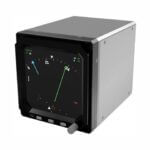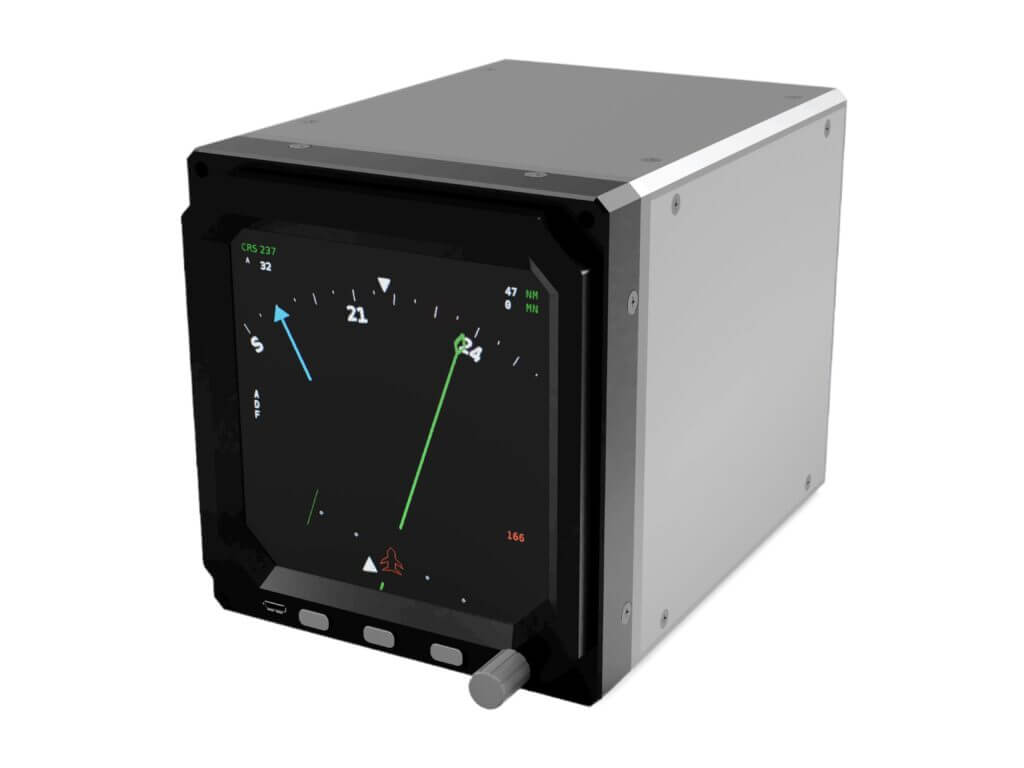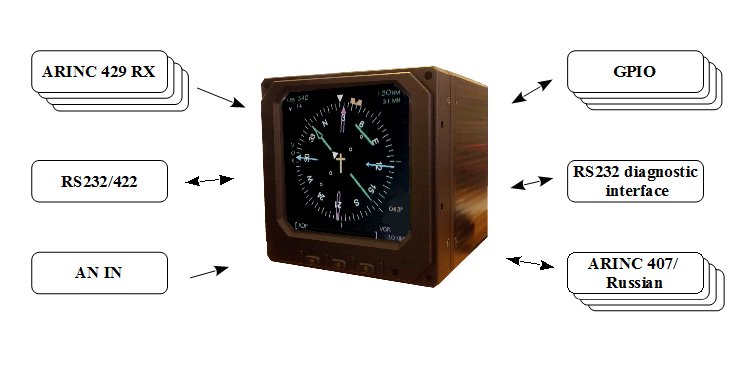

The gyroscopic direction indicator or directional gyro gave rise to the horizontal situation indicator (HSI), which later evolved into the EHSI (Enhanced Horizontal Situation Indicator). The EHSI surpasses the HSI by incorporating directional information from two navigation aids and the aircraft’s heading.
Technical parameters
RS 232: 1× Service port
ARINC 429 RX: 4× Input port
GPIO: 4× Digital input or 2× Relay output
AN IN: 1× Analog input
ARINC 407/Russian: 3× Synchro/Resolver
Inputs: 1× Vertical and lateral deviation
RS 232/422 (optional): 2× Input port
ARINC 429 TX (optional): 2× Output port
MIL 1553 (optional): 2× Bus
DIN (optional): 2× Digital input
XYZ/SinCos (optional): HDG, ROLL, PITCH, ADF/RMI/VOR (SinCos/Synchro)
CDI: NAV/Annunciators, ToFrom, Flags
General Parameters
Voltage (nom.): 27,5 V DC
Voltage (operative): 11…30 V DC
Current (nom.): 0,3 A
Power Consumption: 10,25 W
Operating temperature: -55 – 70 °C
Storage temperature: -55 – 85 °C
Humidity: max. 95 %
Connectors: Circular 37 pin
Dimensions: 132 × 123 × 123 mm
Weight: 1300 g ± 10 %
Display Parameters
Display area: 94,5 (H) × 94,5 (V)
Number of dots: 1200 (H) × 1200 (V)
Number of color: 10bit/color (1,07 B)
Luminance: 1200 cd/m2
Viewing angle: >-80~80° (H), -70~80° (V)
Back-light unit: Edge-light, LED, optional NVIS-B
In addition to these features, the EHSI goes beyond its predecessors to display an even greater amount of valuable navigational information.
Its main objective is to maximize the provision of useful navigational data for pilots.

